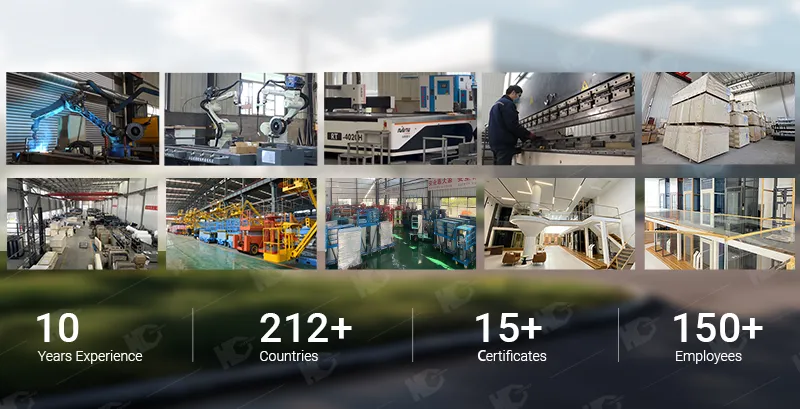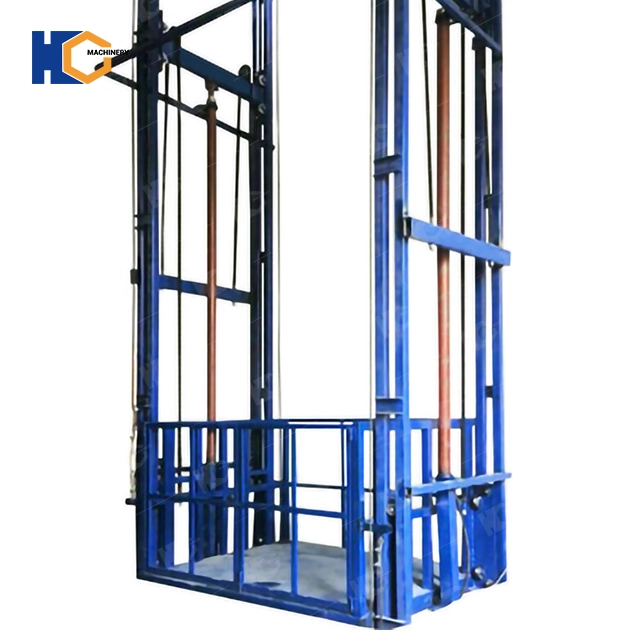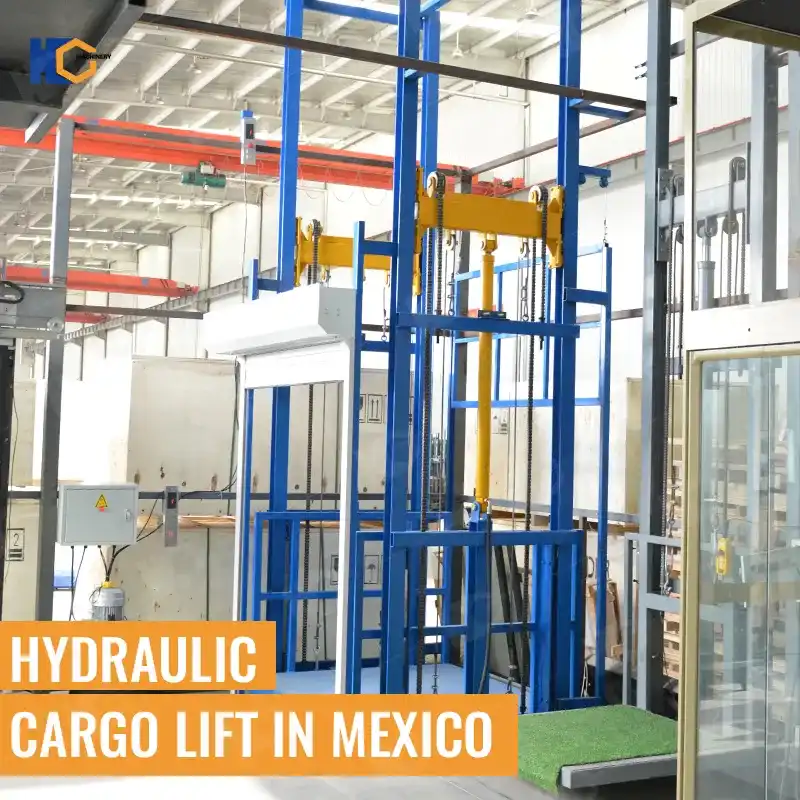![]() Hydraulic cargo lift specifications.pdf
Hydraulic cargo lift specifications.pdf
Hydraulic cargo lift is vital component in modern logistics and material handling systems. This lift, leveraging hydraulic power to facilitate the vertical movement of goods, plays a critical role in various industries, from manufacturing to warehousing. Understanding the concept, classification, basic parameters, specifications, configurations, and advantages of hydraulic cargo lifts is essential for optimizing their use in diverse applications.
Hydraulic cargo lift is a mechanical system designed to elevate and lower heavy loads using hydraulic cylinders. The primary principle behind this lift involve converting hydraulic energy into mechanical force, which enables smooth and efficient vertical movement.

To understand the cargo lift specifications, we should know about the classification firstly. There are two main types of hydraulic cargo lifts: scissor lifts and guid rail lifts.
Scissor cargo lifts specifications: Characterized by their crisscrossed, scissor-like support structure, scissor cargo lifts provide stable and compact lifting capabilities. The mechanism involves a series of linked supports that extend and retract, allowing the lift platform to rise and fall. These lifts are commonly used in environments where space is limited and a compact design is advantageous. They are ideal for warehouses, loading docks, and manufacturing facilities where vertical space needs to be utilized efficiently. The lifting height can reach from 0.5m to 15m. Lading capacity is from 50kg to 20Ton. This type requires a pit to make the platform on the same level with ground.
Guid rail cargo lifts specifications: These lifts operate along fixed tracks or guide rails, providing enhanced stability and precision. Guided lifts are suitable for environments requiring exact positioning and stability, such as in automotive manufacturing or high-rise buildings. The track system ensures that the lift platform moves vertically without swaying or tilting, making it an excellent choice for environments demanding high precision. This type is suitable for large height and load capacity, requires a pit of only 200~300mm.
The basic parameters of cargo lift specifications include:
Load Capacity: The maximum weight the lift can handle, typically ranging from a few hundred kilograms to several tons. Load capacity must be selected based on the specific needs of the application to ensure safety and efficiency.
Lifting Height: The vertical distance the lift can travel. This parameter should match the height requirements of the installation site, allowing for effective material handling.
Platform Size: The dimensions of the lift platform, which should be chosen based on the size of the loads to be transported. Larger platforms accommodate bigger loads, while smaller platforms are suitable for confined spaces. We can customize the size for customers
Operation Speed: The rate at which the lift moves up and down. Faster speeds increase efficiency but may impact stability and safety, so a balance must be struck based on the application needs. JNHC Hydrualic cargo lift can reach a speed of 4-6m/min.
Hydraulic cargo lifts come with a variety of specifications tailored to different operational requirements. Key specifications include:
Hydraulic system: The type and power of the hydraulic pump, which affects the lift’s efficiency and capacity. Common types include gear pumps and piston pumps, each offering different levels of performance.
Construction material: Hydraulic lifts are constructed from steel. Steel provides durability and strength.
Safety features: Cargo lift specifications often include emergency stop buttons, overload protection, and safety guards, manual lowering valve. These features are essential for ensuring safe operation and preventing accidents.
The cargo lift specifications can vary based on application needs and design preferences:
Customizable platforms: Platforms can be customized to fit specific sizes and shapes, accommodating a wide range of load types.
Control systems: Includes manual or automated controls. Advanced models might feature computerized systems with programmable settings for automated operations.
Access options: Configurations might include different types of entry points, such as ramps or loading docks, to facilitate easy loading and unloading.
Besides the cargo lift specifications, JNHC brand hydraulic cargo lifts offer numerous advantages:
Efficient material handling: They enable smooth and efficient movement of heavy loads, reducing the need for manual lifting and handling.
Space utilization: The compact design of scissor lifts allows for effective use of vertical space, making them suitable for environments with limited floor space.
Versatility: hydraulic lifts can be adapted to various applications and configurations, making them versatile tools in different industries.
Safety: With proper maintenance and safety features, hydraulic lifts provide a safe solution for handling heavy materials, minimizing the risk of accidents.
Hydraulic cargo lift is indispensable tools in modern material handling, offering efficient, versatile, and safe solutions for elevating and transporting heavy loads. Understanding cargo lift specifications, concept, classifications, parameters, configurations, and advantages is crucial for selecting the right lift for specific applications. As technology advances, hydraulic cargo lifts continue to evolve, offering enhanced performance and greater adaptability to meet the demands of diverse industrial environments.


222.webp)
740.webp)
916.webp)
697.webp)

 667.webp)